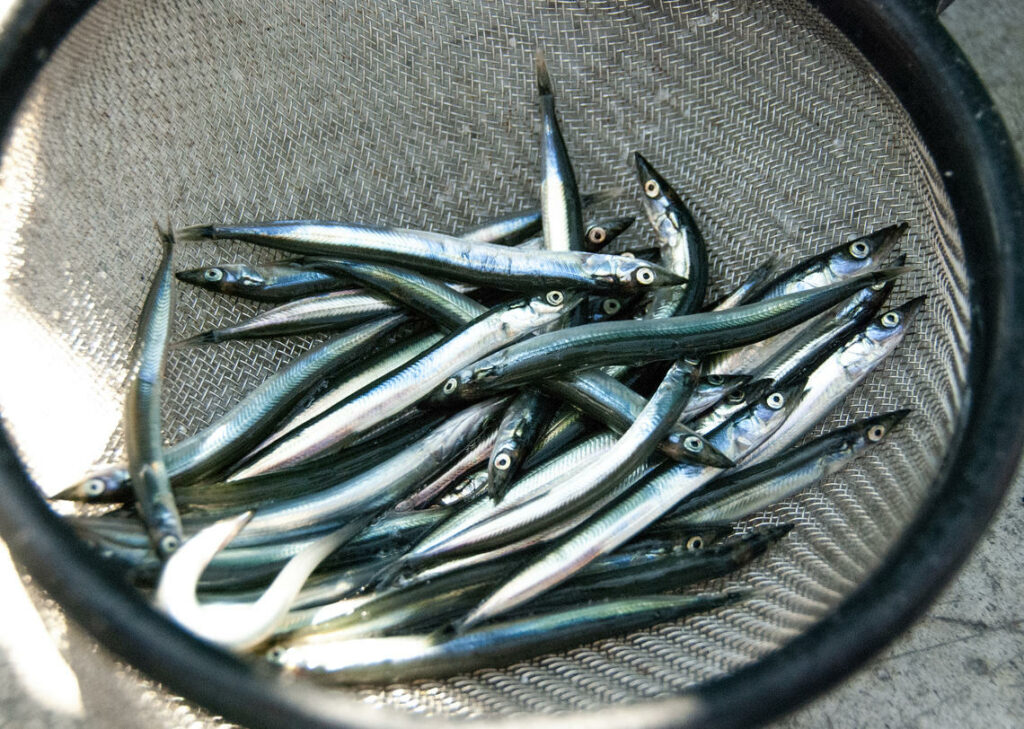Forage fish, coastal birds and how it all interacts
The coastal waters of Oregon are part of what is known as the California Current Large Marine Ecosystem which runs from Baja California, Mexico to the central coast of British Columbia. Along this stretch of the Pacific coastline there has been historically significant distribution of what are known as ‘forage fish’. These forage fish are relatively small and often live in the upper layers of the open water which makes them prime prey for other fish, marine mammals and birds. Species like pacific herring, smelts, sandlance, pacific sardine, northern anchovy are all considered forage fish.

Photo thanks to Sarah Schoen, USGS
In Oregon, forage fish play a significant role in both the balance of the natural system and in the balance of Oregon’s nearly $700-million commercial fishing industry. While there is little direct fishing for forage fishes in Oregon, commercially-important species like salmon, tuna, and sablefish heavily rely on these forage fishes for food at different parts of their lives. Because of their outsized role in the ecosystem, in 2016 the Oregon Department of Fish and Wildlife and Pacific Fisheries Management Council drafted protections specific to Oregon’s coastal waters to protect the integrity of remaining forage fish stocks. Unfortunately, forage fish can be challenging and expensive to sample on the ocean, and so their population trends remain relatively poorly understood.
So what does this have to do with Birds with Fish?
Oregon’s coastal birds rely heavily on fish and marine invertebrates to sustain themselves and their chicks during breeding season. For imperiled species of interest like the Tufted Puffin, the presence and abundance of calorically-rich forage fish species is vital to their reproductive success. Birds with Fish attempts to quantify the diets of Oregon’s seabirds by identifying forage fish (and other invertebrates) from photographs. Through this data, we hope to determine which forage fishes are most important for Oregon’s seabird populations.
Tufted puffins are an iconic Oregon coast seabird
But their future is uncertain after a nearly 95% population collapse from the 1980’s to 2010. In the span of a few decades tufted puffins population numbers fell from ~5,000 to ~400 throughout Oregon. This population decline sparked concern from both the conservation community and the Fish and Wildlife Service. However in 2020, the U.S. Fish and Wildlife Service did not list the tufted puffin under the Endangered Species Act since Tufted Puffins continue to thrive in Alaska. Despite this decision, Tufted Puffins have declined severely in the Contiguous United States, although the reasons are unclear. Many researchers suspect changing food resources may be to blame but very little data exists to examine this theory. Now, thanks to monitoring efforts by Oregon State University researchers and Birds with Fish contributors, we begin collecting data on Tufted Puffin diets and better our understanding of what may be causing the decline of this charismatic species.


